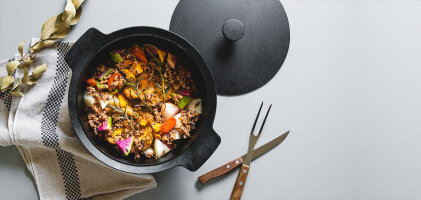Cast iron kettle: First use of a tetsubin

Water kettles made of durable cast iron are practically a must-have in Japan for those who appreciate tea enjoyment at a high level. Japanese products are among the most prestigious in the world for good reason. Not only the high-quality craftsmanship in the Nambu Tekki process, but also the use of exclusively high-quality iron ore as raw material, make cast iron Tetsubin a truly special piece in the kitchen.
With proper care, Tetsubin water kettles can be a faithful companion for decades. However, there are a few things to consider during the very first use of a new cast iron kettle. Not all water is equally suitable for inaugurating a Tetsubin.
What do I have to pay attention to when using it for the first time?
For the initial use, the Japanese manufacturer OIGEN recommends using hard water with a hardness of about 300mg. Water with a high degree of hardness, such as Evian or Vittel, contains a significant amount of calcium and magnesium. These minerals crystallize upon heating and adhere as a white film to the inside of the iron kettle. This is referred to as "hot water scale" or in the Nambu Tekki industry as "Yakuku". The "Yakuku" deposits on the inside of the iron kettle are responsible for the natural protection of the material and should not be touched or removed.
Using tap water at the beginning, depending on the water quality in the area, may risk rust formation and prevent the formation of hot water scale.
Step-by-step instructions
Step 1: Pour hard water into your Tetsubin water kettle until it is completely filled. Avoid boiling over later.


Step 2: Make sure to remove the lid from the cast iron kettle. This allows the steam to escape freely, preventing boiling over. Boil the water for about 20 minutes over medium heat.
Step 3: Put the lid on and pour out the water completely. Be careful when pouring, as the body, handle, and steam are hot.


Step 4: Place the kettle back on the heat source and thoroughly dry the inside of the kettle with residual heat.
Step 5: Repeat this process of boiling water, emptying, and drying up to 3 times. Especially after the final step, it's important to dry the interior of the Tetsubin with residual heat to prevent rust. Traditionally made cast iron kettles are not coated with enamel, making them susceptible to rust in the kitchen. If your cast iron Tetsubin or teapot does happen to rust, you can find a quick solution here.













-from-the-yakiyaki-grill-pan.jpg)




